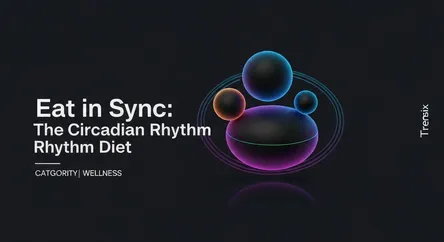Wellness
Eat in Sync: The Circadian Rhythm Diet

Discover how aligning your eating schedule with your body's internal clock can boost metabolism, improve sleep, and enhance overall wellness.
What is it?
The connection between circadian rhythm and eating, a field known as chrononutrition, explores how when you eat is as important as what you eat. Your circadian rhythm is the body's internal 24-hour clock, which regulates sleep-wake cycles, hormone release, and metabolism. This internal clock means your body is primed to digest and metabolize food more efficiently during the day. Eating in sync with this natural rhythm involves consuming meals during daylight hours and fasting overnight, typically within an 8 to 12-hour window.
Why is it trending?
Modern lifestyles, including irregular work schedules and late-night eating, often disrupt our internal clocks, leading to circadian misalignment. There is growing scientific evidence linking this disruption to an increased risk of obesity, type 2 diabetes, and cardiovascular disease. As a result, practices like time-restricted eating (TRE), which align with circadian rhythms, have gained popularity. Studies suggest that matching meal times to our body's clock can lead to significant weight loss, improved insulin sensitivity, and better metabolic health, driving interest in this wellness approach.
How does it affect people?
Aligning meals with your circadian rhythm can have profound effects on well-being. It can lead to improved digestion, enhanced metabolism, and more stable energy levels throughout the day. People may experience better weight management, as the body is more efficient at burning calories earlier in the day. Conversely, eating late at night, when the body is preparing for sleep, can impair glucose tolerance and promote fat storage. Adopting a circadian-aligned eating pattern can also improve sleep quality and lower the risk of chronic health conditions, offering a powerful tool for long-term health.